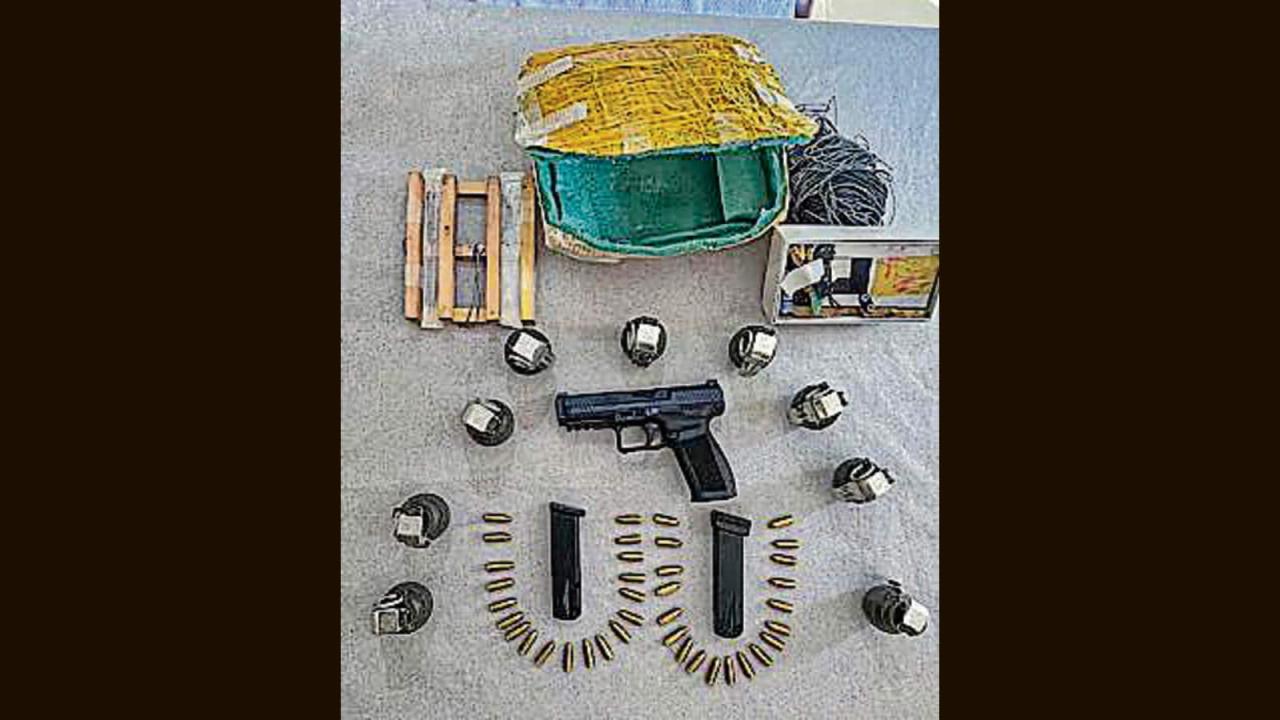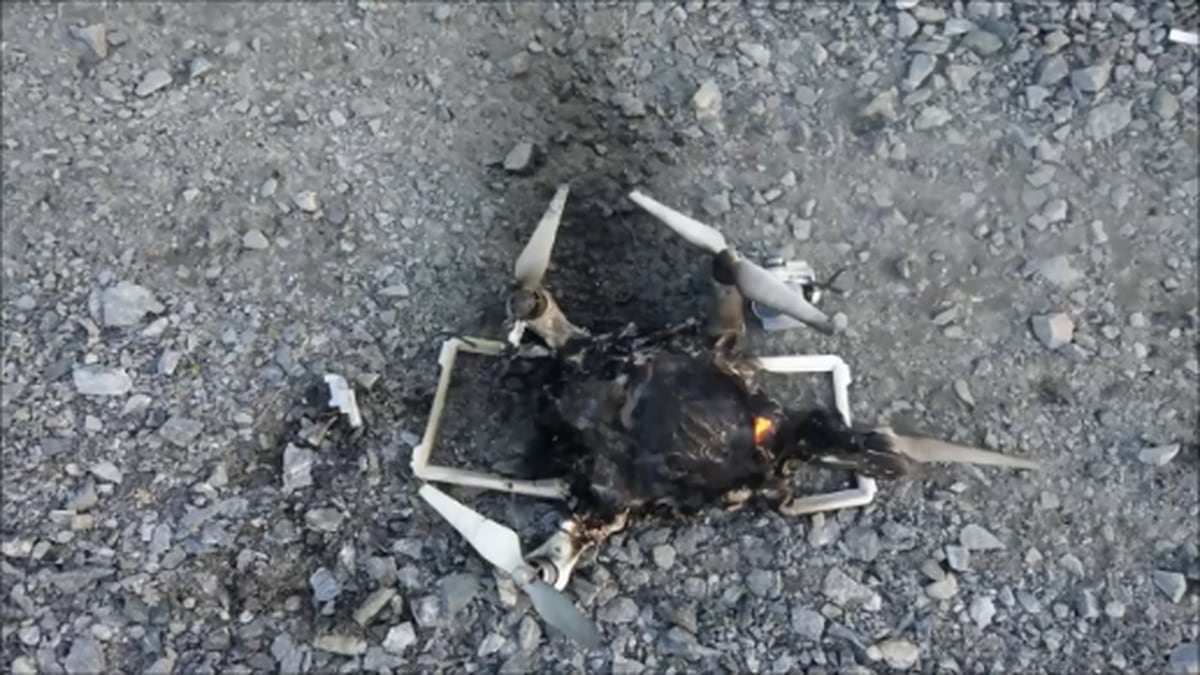Remington drone loads represent a significant advancement in unmanned aerial vehicle (UAV) technology. This guide delves into the capabilities, operational aspects, legal considerations, and future trends surrounding these powerful and versatile drones. We’ll explore the various Remington drone models, their payload capacities, and the diverse applications they serve across numerous industries.
From understanding the intricacies of payload integration and safe operational procedures to navigating legal regulations and performing essential maintenance, this resource aims to provide a complete understanding of Remington drone loads. We will also examine real-world applications and speculate on the exciting advancements on the horizon for this innovative technology.
Remington Drone Models and Capabilities
Remington offers a range of drones designed for diverse applications, each with unique specifications and performance characteristics. This section details the available models, their key features, and a comparison against competitors.
Remington Drone Model Specifications

While specific models and their exact specifications are proprietary information and may vary depending on the specific configuration, we can offer a generalized comparison based on typical Remington drone offerings. Assume, for this example, that Remington offers three main models: the RX-100 (entry-level), the RX-500 (mid-range), and the RX-1000 (professional).
Understanding Remington drone load capacities is crucial for safe and efficient operation. However, precise visual documentation of these loads often requires high-quality photography, which is why many operators utilize cameras like the fujifilm x100v for its exceptional image quality. This ensures clear records for analysis and reporting, ultimately improving the overall management of Remington drone loads.
| Model | Payload Capacity (kg) | Flight Time (minutes) | Range (km) |
|---|---|---|---|
| RX-100 | 2 | 25 | 5 |
| RX-500 | 5 | 40 | 10 |
| RX-1000 | 10 | 60 | 20 |
Comparison with Competitors
The following table compares Remington drones to competitors with similar capabilities. Note that these are illustrative examples and actual specifications may vary based on specific models and configurations from each manufacturer.
| Feature | Remington RX-500 | Competitor A | Competitor B |
|---|---|---|---|
| Payload Capacity (kg) | 5 | 4 | 6 |
| Flight Time (minutes) | 40 | 35 | 45 |
| Range (km) | 10 | 8 | 12 |
| Price (USD) | 15000 | 12000 | 18000 |
Payload Capacity and Types for Remington Drones
Remington drones are designed to carry a variety of payloads, depending on the model and configuration. This section details the different payload types and their applications, along with limitations based on drone model.
Payload Types and Applications
- High-Resolution Cameras: Used for aerial photography, surveying, and inspection. Example: Inspecting bridge structures for damage.
- Thermal Cameras: Detect heat signatures for search and rescue, infrastructure monitoring, and precision agriculture. Example: Identifying leaks in pipelines.
- Multispectral Sensors: Gather data across multiple wavelengths for precision agriculture and environmental monitoring. Example: Assessing crop health and identifying areas needing irrigation.
- LiDAR Sensors: Create 3D models of terrain for mapping, surveying, and construction. Example: Generating accurate terrain models for road construction planning.
- Sprayers/Dispensers: Distribute pesticides, fertilizers, or other substances in agriculture and other applications. Example: Precisely applying fertilizer to crops.
Payload Capacity Limitations
The maximum payload capacity varies significantly between Remington drone models. The RX-100 has a limited capacity, suitable for smaller payloads like cameras. The RX-500 can handle larger payloads, while the RX-1000 is built for heavy-duty applications.
Payload Capacity Visualization, Remington drone loads
Imagine a simple bar chart. The X-axis represents the Remington drone models (RX-100, RX-500, RX-1000). The Y-axis represents the maximum payload capacity in kilograms. The bars would show a progressive increase in payload capacity from the RX-100 to the RX-1000, reflecting the model’s capabilities.
Operational Procedures and Safety Guidelines
Safe and effective operation of Remington drones requires adherence to best practices and safety guidelines. This section Artikels pre-flight checks, post-flight procedures, payload loading, and hazard mitigation strategies.
Pre-Flight Checklist
- Inspect the drone for any damage.
- Check battery levels and ensure proper charging.
- Verify GPS signal acquisition.
- Calibrate the drone’s sensors.
- Review the flight plan and ensure compliance with regulations.
Payload Loading Procedure

- Power off the drone.
- Carefully attach the payload to the designated mounting points.
- Secure the payload to prevent movement during flight.
- Power on the drone and check for any errors.
Safety Hazards and Mitigation
- Loss of Signal: Maintain line-of-sight, use a redundant communication system.
- Battery Failure: Use high-quality batteries, monitor battery levels, plan for emergency landings.
- Mechanical Failure: Regular maintenance, pre-flight inspections.
- Collision Hazards: Avoid flying near obstacles, use obstacle avoidance systems.
Legal and Regulatory Compliance
Operating Remington drones requires adherence to various regulations and laws. This section covers registration processes, legal implications of violations, and key considerations for both commercial and recreational use.
Drone Registration

Registration procedures vary by region. In many countries, commercial drone operations require specific licenses and permits. Recreational use may also require registration depending on local regulations. It is crucial to check the specific regulations in your area before operating any drone.
Legal Implications of Violations
Violating drone regulations can lead to fines, suspension of operating privileges, or even criminal charges. These penalties can be substantial and impact both individuals and organizations.
Legal Considerations for Commercial and Recreational Use
Commercial use often necessitates more stringent compliance with regulations, including obtaining necessary licenses and insurance. Recreational use typically involves less stringent requirements but still necessitates adherence to basic safety and airspace regulations.
Maintenance and Troubleshooting
Regular maintenance and effective troubleshooting are crucial for ensuring the longevity and safe operation of Remington drones. This section Artikels maintenance schedules, troubleshooting steps, and component repair/replacement processes.
Regular Maintenance Schedule
A typical maintenance schedule would include monthly inspections of all components, including motors, propellers, and sensors. More extensive maintenance, including cleaning and lubrication, might be needed every six months or annually depending on usage.
Troubleshooting Common Issues
Common issues include loss of signal, battery failure, and motor malfunctions. Troubleshooting steps generally involve checking connections, replacing faulty components, and recalibrating sensors.
Troubleshooting Flowchart (Loss of Signal)
A flowchart for loss of signal would start with checking the drone’s battery level. If low, replace or recharge. If the battery is fine, check the controller’s battery. If that is fine, check the signal strength indicator. If weak, move closer to the drone or check for interference.
Remington drone loads often require careful consideration of payload capacity and stability. For optimal visual monitoring during these operations, high-quality camera systems are essential, such as those found in the port dover camera range. This ensures clear footage, vital for assessing the success and safety of each Remington drone load. The resulting data is crucial for optimizing future operations and maintaining efficiency.
If the signal remains lost, inspect the drone’s antenna and communication system for damage.
Repairing or Replacing Damaged Components
Repairing or replacing damaged components should only be done by qualified technicians or using approved replacement parts to ensure safety and continued proper operation. Improper repairs can lead to further damage or safety hazards.
Real-World Applications of Remington Drones
Remington drones find applications across various industries. This section provides examples of their use, advantages, disadvantages, and cost-effectiveness compared to alternative methods.
Applications in Different Industries
- Agriculture: Crop monitoring, precision spraying, livestock management.
- Construction: Site surveying, progress monitoring, inspection of structures.
- Surveillance: Security monitoring, search and rescue operations.
- Infrastructure Inspection: Bridge inspection, pipeline monitoring, power line inspection.
Advantages and Disadvantages
Advantages include increased efficiency, reduced costs, and improved safety compared to traditional methods. Disadvantages can include initial investment costs, regulatory compliance requirements, and potential for technical malfunctions.
Cost-Effectiveness
The cost-effectiveness of Remington drones depends on factors like the specific application, scale of operation, and comparison with alternative methods. In many cases, the efficiency gains and reduced labor costs can outweigh the initial investment.
Future Developments and Trends in Remington Drones: Remington Drone Loads
The drone industry is constantly evolving. This section explores potential future advancements in Remington drone technology and emerging industry trends.
Potential Future Advancements
- Increased Autonomy: More sophisticated AI-powered flight systems enabling fully autonomous operations.
- Improved Payload Capacity: Larger and more robust drones capable of carrying heavier payloads.
- Enhanced Sensor Technology: Integration of advanced sensors providing more detailed and accurate data.
- Longer Flight Times: Improved battery technology enabling longer flight durations.
Emerging Industry Trends
- Drone-in-a-Box Systems: Automated drone deployment and retrieval systems.
- Beyond Visual Line of Sight (BVLOS) Operations: Enabling drone flights beyond the pilot’s direct visual range.
- Drone Swarm Technology: Coordinating multiple drones for large-scale operations.
Conceptual Overview of a Next-Generation Remington Drone
Imagine a sleek, modular drone with interchangeable payload bays, advanced obstacle avoidance systems, and a robust AI-powered flight controller capable of fully autonomous operations, including pre-programmed flight plans and real-time obstacle avoidance. This drone would incorporate advanced sensor technology and feature significantly extended flight times.
Understanding Remington drone loads involves a multifaceted approach encompassing technical specifications, safety protocols, legal compliance, and practical applications. This guide has provided a foundational overview of these key aspects. As drone technology continues to evolve, staying informed about best practices and regulatory updates is crucial for both safe and effective operation. The future of Remington drones promises even greater efficiency and versatility across diverse industries, shaping the landscape of aerial technology for years to come.
Frequently Asked Questions
What is the warranty period for Remington drones?
Warranty periods vary depending on the specific model and purchase location. Consult the retailer or manufacturer directly for details.
How often should I replace the drone’s batteries?
Battery lifespan depends on usage. Follow the manufacturer’s recommendations for charging cycles and replacement intervals to maintain optimal performance and safety.
Are there any limitations on flying Remington drones near airports?
Yes, strict regulations govern drone operation near airports. Consult the FAA (or relevant aviation authority in your region) for specific guidelines and restrictions.
What type of training is recommended for operating Remington drones?
Depending on the application (commercial or recreational), various levels of training are recommended. Check with local authorities and consider professional training courses for advanced operation.